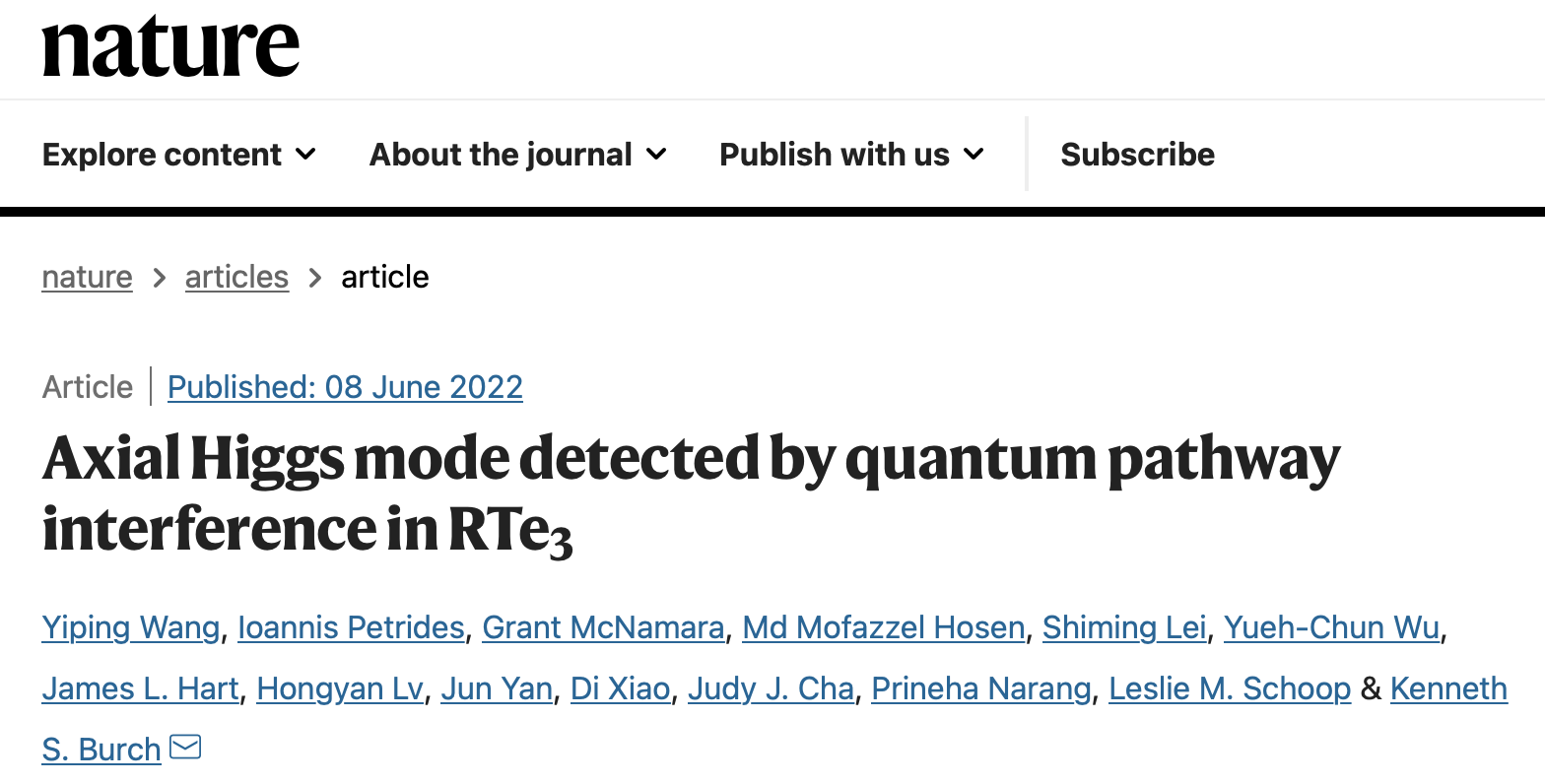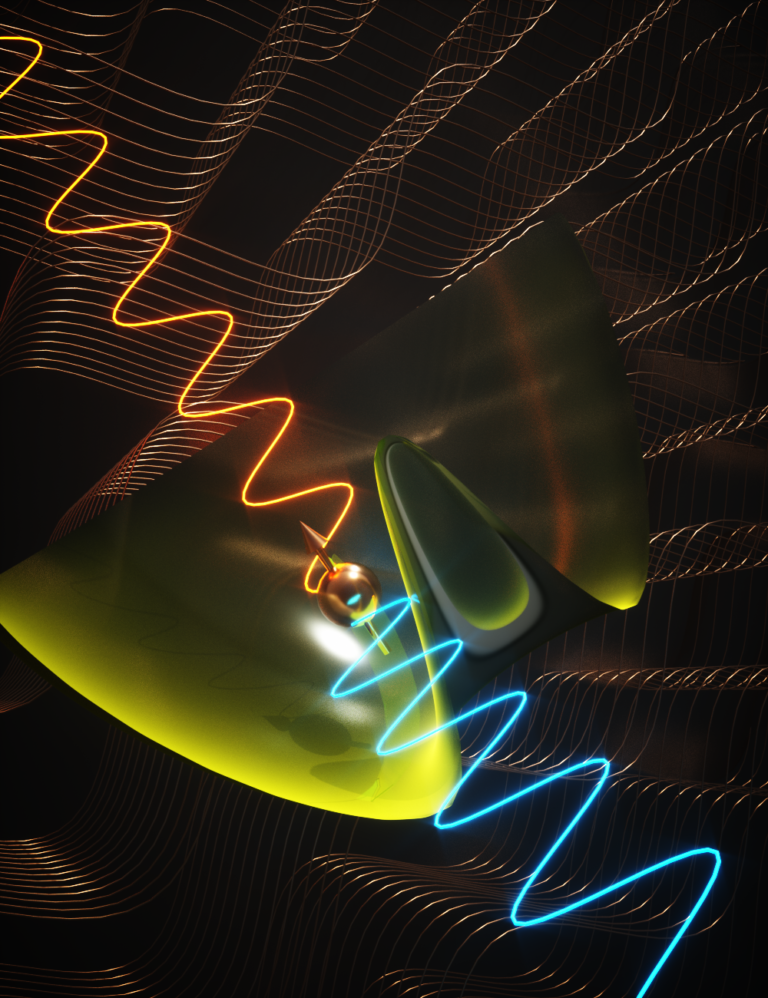
Recently, a team of Chinese and foreign scientists discovered the quantum excited state of the axial Higgs mode for the first time, which may be helpful for future research and optimization of quantum systems at room temperature. The related results were published in Nature. 
To understand the Axial Higgs mode, you first need to understand one of the most fundamental theories of physics: the Standard Model of particle physics. As shown, the "disc" represents the Standard Model of particle physics, with each letter representing an elementary particle, a particle that has no structure inside and cannot be divided. Interactions between particles explain the makeup of the world and form a system known as the Standard Model.
The outermost circle of the "disk" is six kinds of quarks and six kinds of leptons, leptons include the well-known electrons, muons, tau mesons and their corresponding neutrinos; the middle circle is photons, gluons, W Bosons and Z bosons are all particles that transmit interactions; the most central is the Higgs boson (the "God particle"), which was released in 2012 at CMS and ATLAS (the CERN Large-scale Experiments at the Hadron Collider) were found simultaneously in both experiments. The Higgs boson gives the aforementioned other elementary particles their mass.
The regular Higgs mode is formed by the Higgs mechanism that provides mass to elementary particles in the Standard Model of particle physics. Unlike the regular Higgs mode, the axial Higgs mode can be observed at room temperature. Room-temperature conditions can help scientists manipulate quantum materials more efficiently and economically in experiments for a variety of applications, including next-generation memory and optoelectronic devices. In the past, these devices often required extremely low temperature conditions.
The axial Higgs mode appears as a low-energy excitation in rare earth tritelluride (RTe3). Rare earth tellurides are a class of quantum materials known for exhibiting charge density wave (CDW) interactions.
To measure the axial Higgs mode, the researchers used Raman spectroscopy to observe quantum path interference. Quantum path interference can be used to demonstrate the control of matter by quantum mechanics. Raman spectroscopic analysis is based on the Raman scattering effect discovered by Indian scientist CV Raman (Raman), and analyzes the scattering spectrum with different frequencies from the incident light to obtain information on molecular vibration and rotation to characterize the structure, structure and structure of complex materials. Methods of analysis of properties. They found quantum path interference in multiple rare-earth CDW systems, and the phenomenon persisted to room temperature, insensitive to mixing of the axial Higgs mode with nearby phonons or vibrations in the material.
Most of the significant quantum activity occurs at extremely low temperatures, which requires dilution refrigerators that rely on liquid helium, otherwise the physical properties of quantum materials would be unobservable or masked by noise. Although the aforementioned research team cooled the CDW samples, they found that even when the material was warmed to room temperature, the signal, or wavelength, produced by the spectroscopic measurements remained clean.
The researchers anticipate that the axial Higgs mode may also exist in superconductors and magnetic materials, which will allow experimentalists to study and optimize quantum systems without relying on extreme conditions (such as very low temperature environments) or large-scale facilities .
Materials containing the axial Higgs mode could even be used as new quantum sensors to classify other quantum systems, the researchers say. Further study of it may help understand dark matter phenomena that cannot be explained by the Standard Model.
The aforementioned work marks an important milestone in the exploration of exotic collective modes including the axial Higgs mode in quantum materials. Prineha Narang, an assistant professor at Harvard University and QSC principal investigator at the U.S. Department of Energy's National Quantum Information Science Research Center, believes that this result is an important step in the multidisciplinary interdisciplinary research between the fields of high-energy physics and condensed matter.

Image via "Nature"
The aforementioned team was led by researchers at Boston College and supported by QSC, the U.S. Department of Energy's National Quantum Information Science Research Center. The team members include scientists from Harvard University, Princeton University, University of Massachusetts Amherst, Yale University, University of Washington and other scientists, including Lv Hongyan, an associate researcher at the Institute of Solid State Physics, Chinese Academy of Sciences.To understand the Axial Higgs mode, you first need to understand one of the most fundamental theories of physics: the Standard Model of particle physics. As shown, the "disc" represents the Standard Model of particle physics, with each letter representing an elementary particle, a particle that has no structure inside and cannot be divided. Interactions between particles explain the makeup of the world and form a system known as the Standard Model.
The outermost circle of the "disk" is six kinds of quarks and six kinds of leptons, leptons include the well-known electrons, muons, tau mesons and their corresponding neutrinos; the middle circle is photons, gluons, W Bosons and Z bosons are all particles that transmit interactions; the most central is the Higgs boson (the "God particle"), which was released in 2012 at CMS and ATLAS (the CERN Large-scale Experiments at the Hadron Collider) were found simultaneously in both experiments. The Higgs boson gives the aforementioned other elementary particles their mass.
The regular Higgs mode is formed by the Higgs mechanism that provides mass to elementary particles in the Standard Model of particle physics. Unlike the regular Higgs mode, the axial Higgs mode can be observed at room temperature. Room-temperature conditions can help scientists manipulate quantum materials more efficiently and economically in experiments for a variety of applications, including next-generation memory and optoelectronic devices. In the past, these devices often required extremely low temperature conditions.
The axial Higgs mode appears as a low-energy excitation in rare earth tritelluride (RTe3). Rare earth tellurides are a class of quantum materials known for exhibiting charge density wave (CDW) interactions.
To measure the axial Higgs mode, the researchers used Raman spectroscopy to observe quantum path interference. Quantum path interference can be used to demonstrate the control of matter by quantum mechanics. Raman spectroscopic analysis is based on the Raman scattering effect discovered by Indian scientist CV Raman (Raman), and analyzes the scattering spectrum with different frequencies from the incident light to obtain information on molecular vibration and rotation to characterize the structure, structure and structure of complex materials. Methods of analysis of properties. They found quantum path interference in multiple rare-earth CDW systems, and the phenomenon persisted to room temperature, insensitive to mixing of the axial Higgs mode with nearby phonons or vibrations in the material.

The researchers confirmed the existence of the axial Higgs mode, an excited state of the particle depicted in the figure as a golden sphere; using Raman spectroscopy, they coupled the incident electric field (in blue) to the particle, which then scatters into different frequencies (red part), the picture comes from Harvard University
"Experiments that simulate the physics of the axial Higgs mode on a lab table have opened up new horizons for our understanding and use of exotic particles," said Ioannis Petrides, a postdoc in Harvard's Narang Laboratory.Most of the significant quantum activity occurs at extremely low temperatures, which requires dilution refrigerators that rely on liquid helium, otherwise the physical properties of quantum materials would be unobservable or masked by noise. Although the aforementioned research team cooled the CDW samples, they found that even when the material was warmed to room temperature, the signal, or wavelength, produced by the spectroscopic measurements remained clean.
The researchers anticipate that the axial Higgs mode may also exist in superconductors and magnetic materials, which will allow experimentalists to study and optimize quantum systems without relying on extreme conditions (such as very low temperature environments) or large-scale facilities .
Materials containing the axial Higgs mode could even be used as new quantum sensors to classify other quantum systems, the researchers say. Further study of it may help understand dark matter phenomena that cannot be explained by the Standard Model.
The aforementioned work marks an important milestone in the exploration of exotic collective modes including the axial Higgs mode in quantum materials. Prineha Narang, an assistant professor at Harvard University and QSC principal investigator at the U.S. Department of Energy's National Quantum Information Science Research Center, believes that this result is an important step in the multidisciplinary interdisciplinary research between the fields of high-energy physics and condensed matter.
Related Posts
0 Comments
Write A Comments